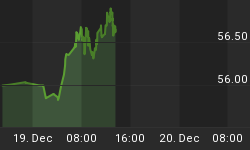Trading with Elliott wave analysis
(Here are Part 1 and Part 2 of this article.)
Think of Investing as a Trip
Here's my advice: View the Elliott wave Principle as your road map to the market and your investment idea as a trip.
You start the trip with a specific plan in mind, but conditions along the way may force you to alter course. Alternate counts are simply side roads that sometimes end up being the best path.
Elliott's highly specific rules keep the number of valid interpretations to a minimum. The analyst usually considers the "preferred count" to be the one that satisfies the largest number of guidelines. The top "alternate" is the one that satisfies the next largest number of guidelines, and so on.
There are only three hard-and-fast rules with the Wave Principle:
- Wave two cannot retrace more than 100% of wave one.
- Typically wave four does not end within the price territory of wave one but may do so from time to time in highly leveraged markets.
- Wave three is never the shortest wave of an impulse.
Elliott's rules give specific "make-or-break" levels for a given interpretation. In Figure 2, for example, if the move labeled (2) continues below the level of the beginning of wave (1), then the originally preferred interpretation would be instantly invalidated.

By eliminating subjectivity, the rules help you firm up your investment strategy -- and reduce your risk.
"Are We There Yet?"
You've heard that irritating question, "Are we there yet?," from the back seat just about a million times. Every map has a scale, and it's the scale that helps me determine how many miles I have to travel before I reach my destination. When using the Wave Principle, Fibonacci relationships are the scale.
Many investors today know that Fibonacci ratios are used for market forecasting. But few realize that Fibonacci analysis of the markets was pioneered by R.N. Elliott. The use of Fibonacci ratios requires a valid Elliott wave interpretation as a starting point. Unfortunately, many non-Elliott analysts try to find Fibonacci proportions between market moves that are not related to each other in any way. This has made the approach appear to be far less valuable than it is.
Elliott wave analysis has two chief insights concerning Fibonacci relationships within waves. First, corrective waves tend to retrace prior impulse waves of the same degree in Fibonacci proportion. For example, wave (2) in Figure 2 retraces 38% of wave (1). That's a common relationship. Other frequent wave relationships are 50% and 62%. Second, impulse waves of the same degree within a larger impulse sequence tend to be related to one another in Fibonacci proportion. For example, common relationships include wave three traveling 1.62 times the distance traveled by wave one of the same degree. When that occurs, wave five often tends toward equality with wave one of the same degree.
Planning the Trip
Just as I sit down and plan my trips before shoving off, I rely on wave interpretations and Fibonacci relationships to help establish investment strategies and reduce risk exposure when I analyze the markets for our clients. Investors use these same wave analysis methods to help decide where to get into a market, where to get out and at what point to give up on a strategy. The Wave Principle lets you identify the highest probability direction for the market, as you also adopt an optimum position to take advantage of it -- all while protecting yourself against lower probability outcomes. You couldn't ask more from your own GPS.
By the way, we did make it to Cades Cove on our way back across Smoky Mountain National Park. I turned off my GPS and consulted my map. The old tried and true worked like a charm.

Who is Jim Martens?
Jim is one of the very few forex Elliott wave instructors in the world, and a long-time editor of EWI's Currency Specialty Service. A sought-after speaker, Jim has been successfully applying Elliott since the mid-1980s, including 2 years at the George Soros-affiliated hedge fund, Nexus Capital, Ltd.
Catch up on Jim's latest thoughts about FX markets and the business of trading them at his Twitter feed.

Download Your Free 14-page eBook: "Trading Forex: How the Elliott Wave Principle Can Boost Your Forex Success"
Here's some of what you'll learn:
1. Which Elliott waves to trade
2. Which Elliott waves set up your forex trade
3. When your analysis is wrong
4. Guidelines for projecting price targets
5. How to evaluate an Elliott wave structure
6. How to use the bigger picture to give you perspective on the market's next major move
Jim also takes you through two real-world trading examples to reinforce what you've learned and apply it to your own trading.
All you need is a free Club EWI profile to download this FREE 14-page eBook now >>
This article was syndicated by Elliott Wave International and was originally published under the headline Which Works Best -- GPS or Road Map? (Part 3). EWI is the world's largest market forecasting firm. Its staff of full-time analysts led by Chartered Market Technician Robert Prechter provides 24-hour-a-day market analysis to institutional and private investors around the world.















